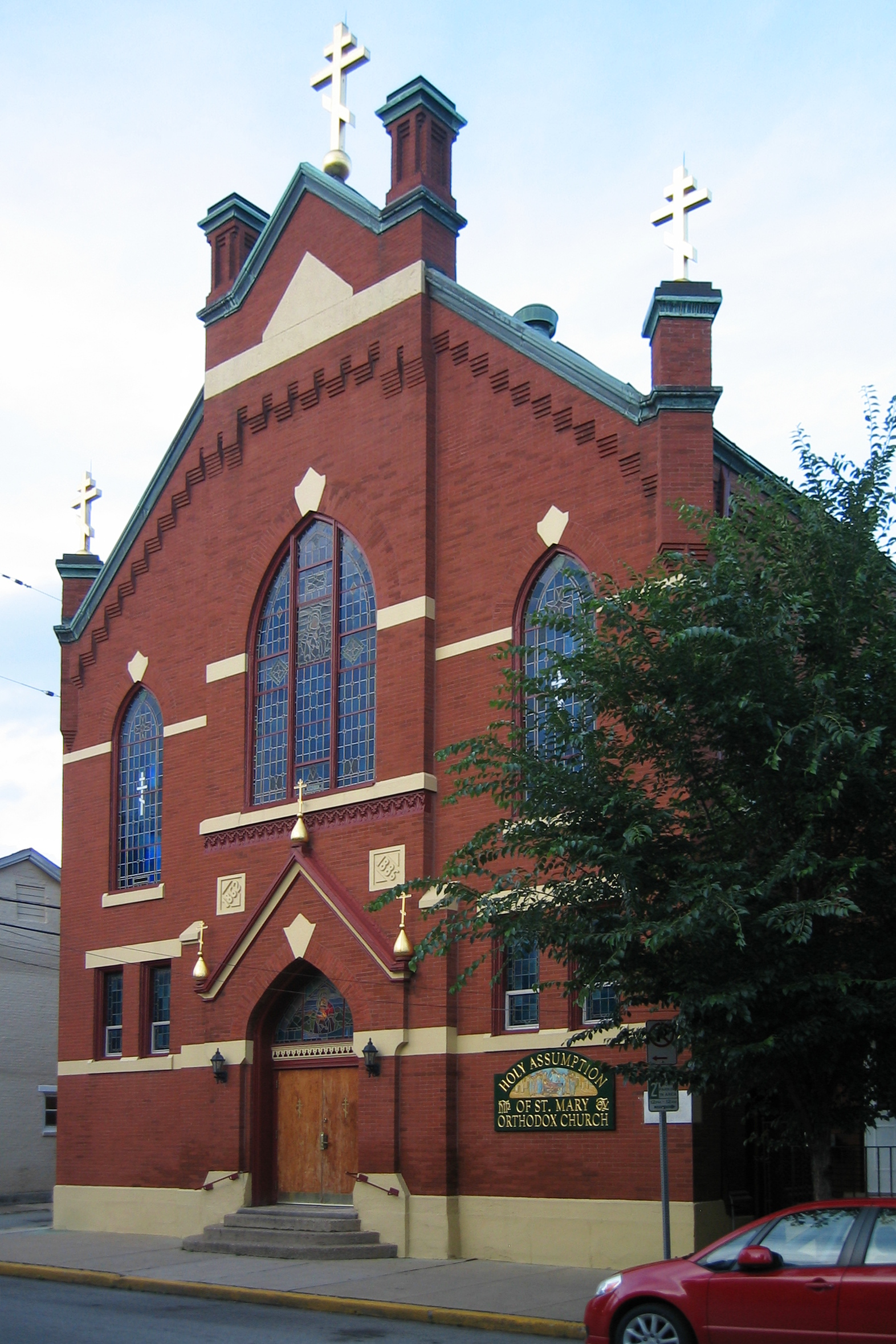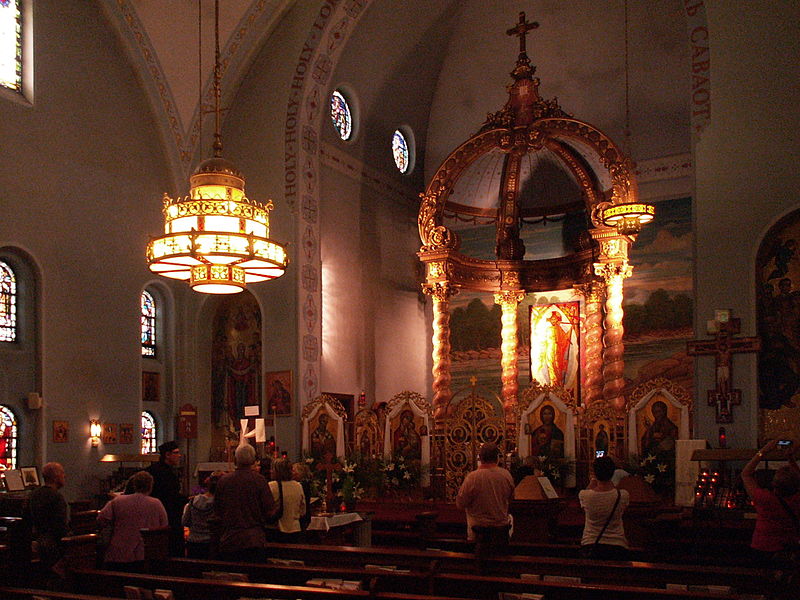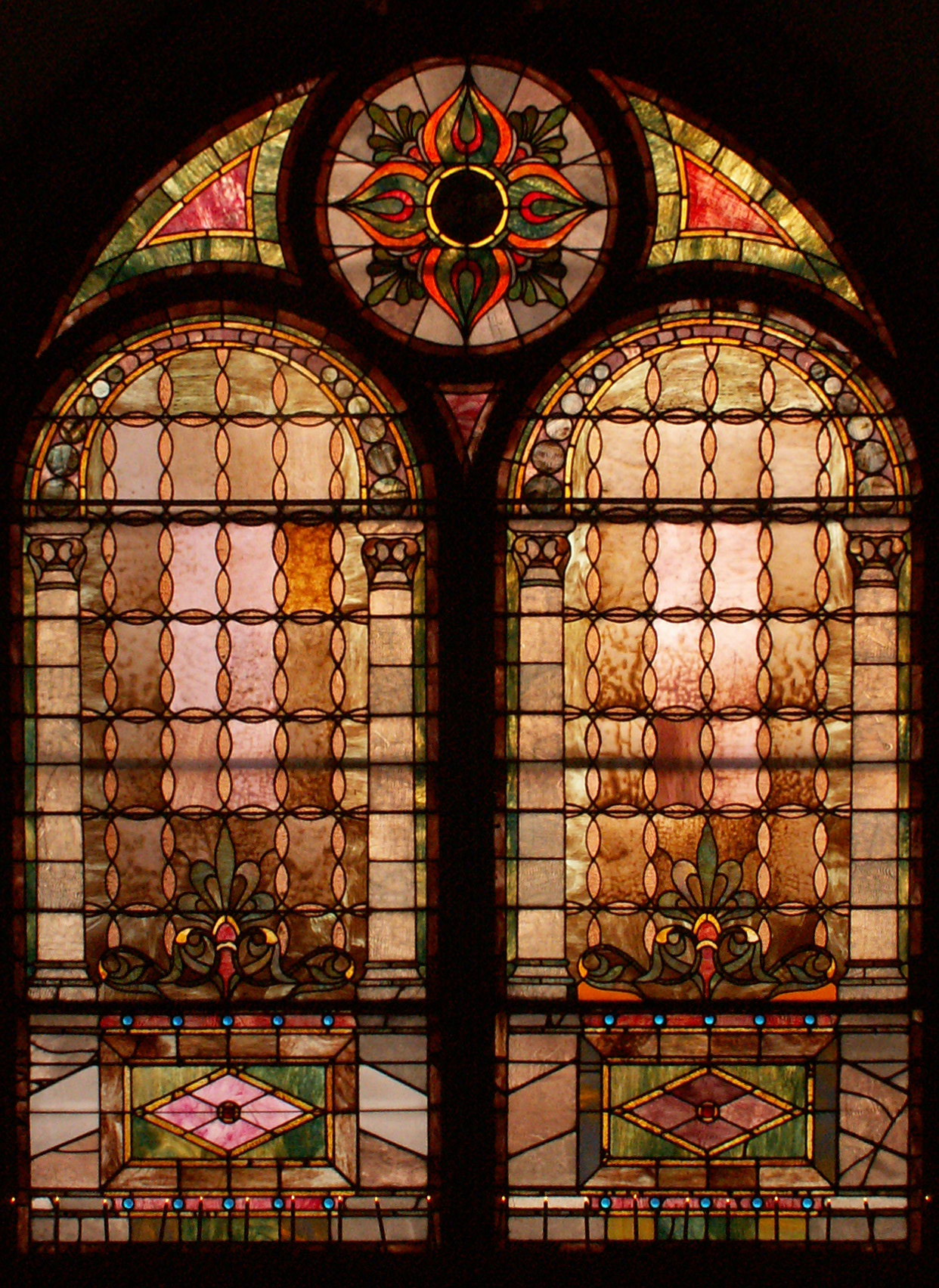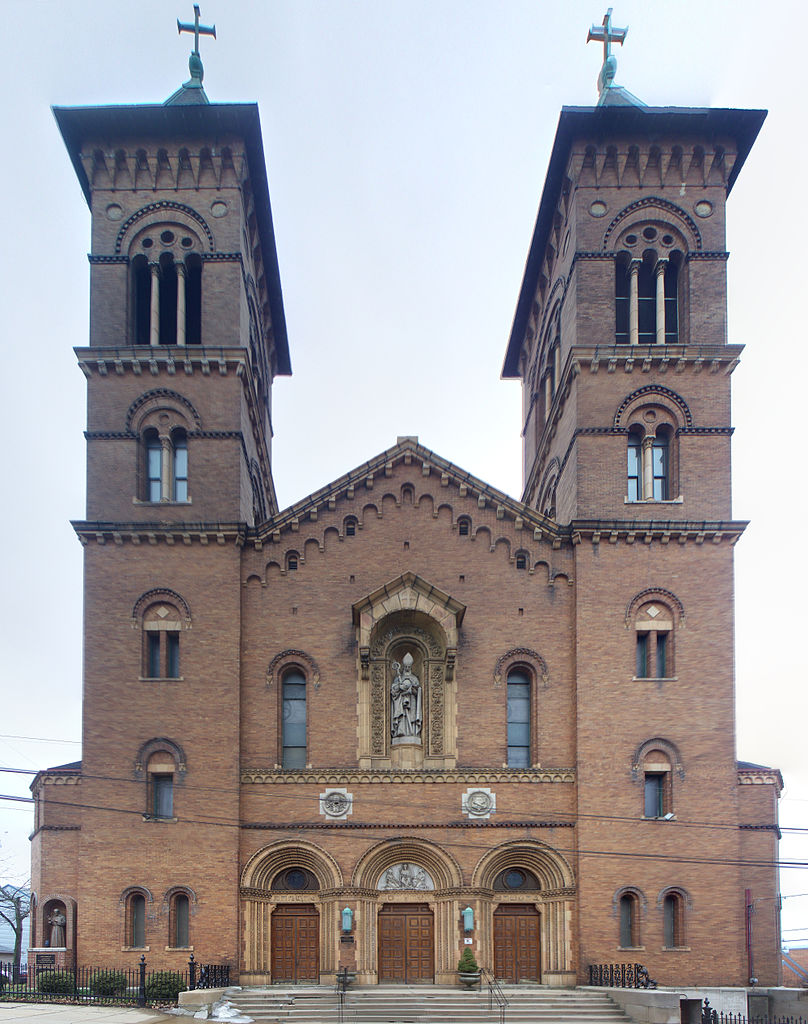
This building has a curious history, only part of which is revealed by the capsule history on the congregation’s Web site:
“In 1917, SS. Peter and Paul Russian Orthodox Church was established in this building. In the early 1930’s due to economic realities, the faithful of SS. Peter and Paul lost their building, and were forced to move. In January of 1943, the present Church structure and parish home were regained by the faithful of SS. Peter and Paul Russian Orthodox Church and in keeping with tradition, the Church was renamed in honor of the Theotokos.”
This paragraph leaves out the origin of the building, which (according to the two date stones) was put in its present form in 1886; the date 1862 is either the date of the foundation of the former congregation or the date when the church was originally built, with a large expansion in 1886. The architecture is clearly American Protestant. “Economic realities” almost certainly means “running out of money.” But “in keeping with tradition” is not well explained: it suggests a Russian tradition that dictates that, when you buy a building from a Protestant church that’s moving out, and then lose it to an economic depression, and then win it back again in a poker game or something, you ditch the saints you came in with and rename it for St. Mary. An Orthodox reader may be able to explain the tradition better to Father Pitt.
At any rate, the church has been Holy Assumption for more than seventy years now, and it is one of the few really successful congregations on the South Side Flats—where others are losing members, this one seems to be growing and thriving.




















